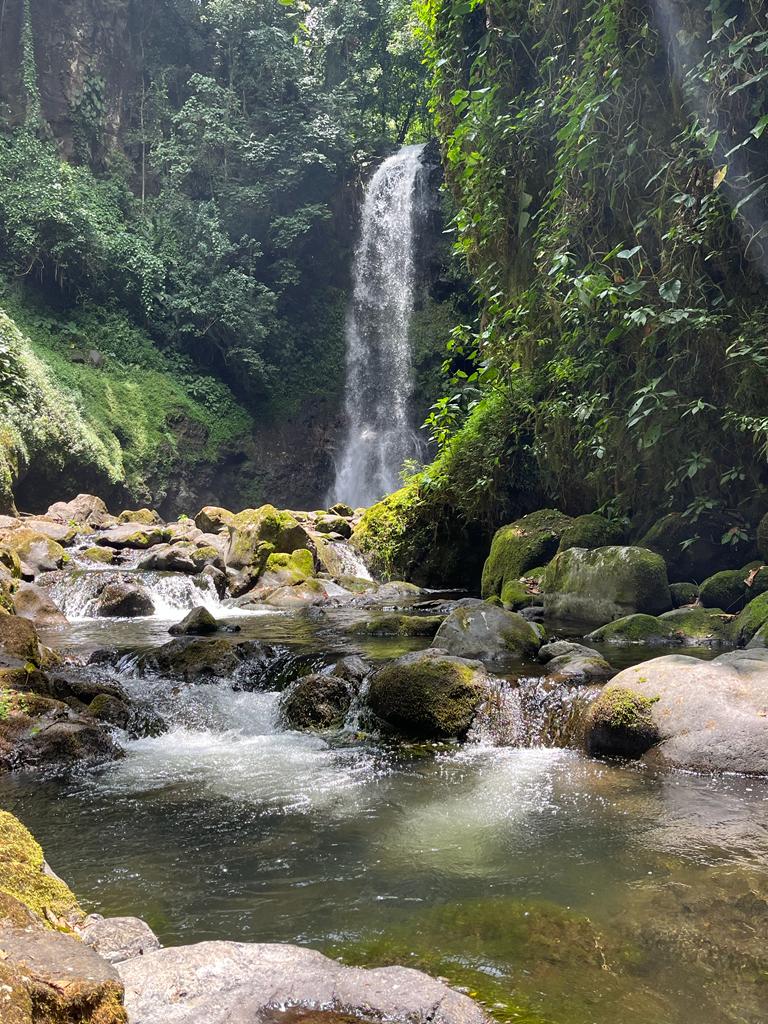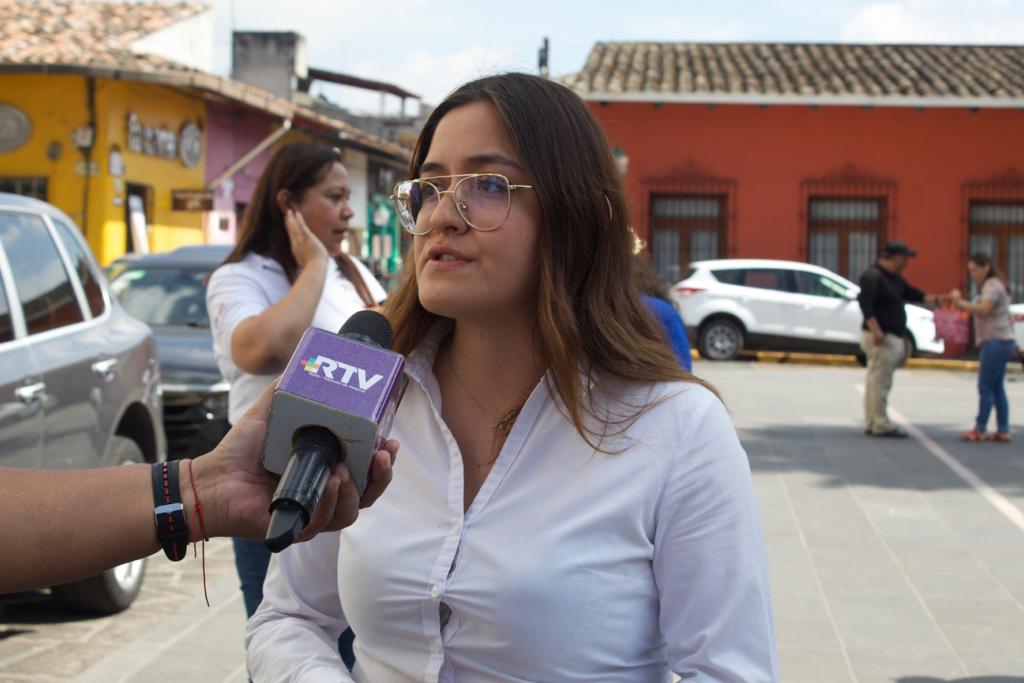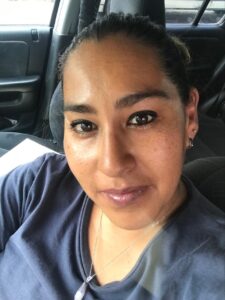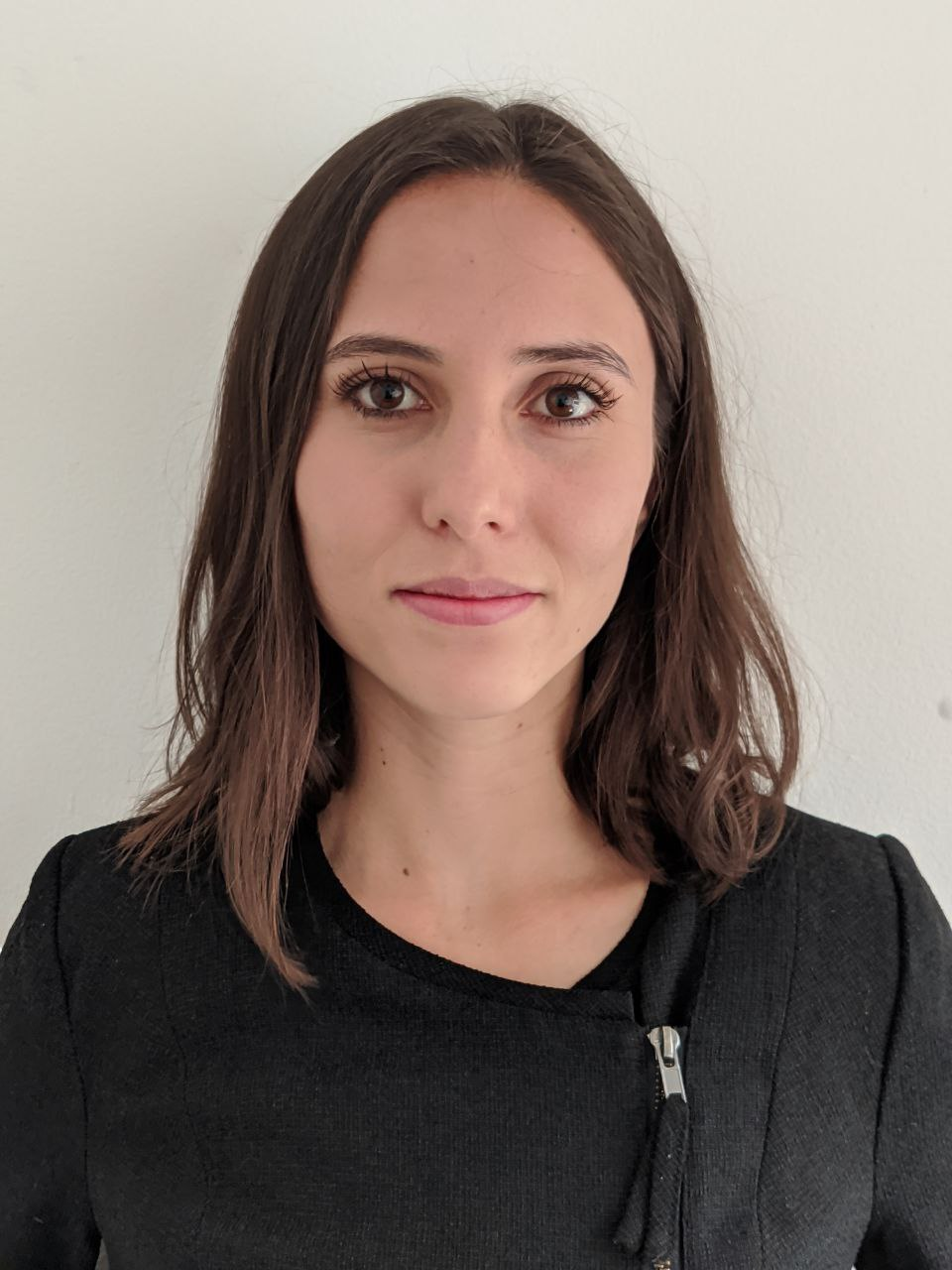Apply now to join our next cohort of Community Science Fellows and Community Leads!

To establish recognition and identity among decision-makers, FIDECOAGUA has strengthened communication ties with government entities such as the Coatepec City Council, the Environment Secretariat of the State of Veracruz (SEDEMA), the National Forestry Commission (CONAFOR) and the Water and Sanitation Commission of the Municipality of Coatepec (CMAS), and Educational Institutions such as the Universidad Veracruzana and the Instituto Tecnológico Superior de Perote. Other important alliances have been with Organizations such as PRONATURA VERACRUZ A.C. and GLOBAL WATER WATCH A.C., which have allowed dissemination and dissemination events to be carried out for the conservation and reforestation of the forest and as a consequence of this agreement, the decree of La Cortadura as a Protected Natural Area was made. Finally, alliances with private entities such as Coca-Cola FEMSA, Nestlé de S.A. of C.V., and ZUCARMEX, have made it possible to maintain the FIDECOAGUA budget in a fixed state over 10 years, being essential economic donors of the monetary resource to be able to pay the forest owners for their conservation.
Working hand in hand with AGU Thriving Earth Exchange will allow us to obtain concrete data that motivates the community to continue contributing to forest conservation. For this reason, FIDECOAGUA’s alliance with AGU Thriving Earth Exchange will help obtain precise data on the uptake of CO2 in the air in the different ecological strata that cover the 12 inhabitant communities of this ecosystem, as well as the collection of hydrological data regarding . to the quality of the water in the presence of the mountain cloud forest that reveals the importance of continuing with conservation efforts and at the same time motivating private initiative and society to be able to invest within the Payment for Environmental Services.
Con el objetivo de establecer un reconocimiento e identidad dentro de los tomadores de decisiones, FIDECOAGUA ha fortalecido lazos de comunicación con entidades gubernamentales como El Ayuntamiento de Coatepec, la Secretaría de Medio Ambiente del Estado de Veracruz (SEDEMA), la Comisión Nacional Forestal (CONAFOR) y la Comisión de Agua y Saneamiento del Municipio de Coatepec (CMAS), e Instituciones Educativas como la Universidad Veracruzana y el Instituto Tecnológico Superior de Perote. Otras alianzas importantes han sido con Organizaciones como PRONATURA VERACRUZ A.C. y GLOBAL WATER WATCH A.C., las cuales han permitido llevar a cabo eventos de difusión y divulgación para la conservación y reforestación del bosque y como consecuencia de este convenio se efectuó el decreto de La Cortadura como Área Natural Protegida. Finalmente, alianzas con entidades privadas como Coca-Cola FEMSA, Nestlé de S.A. de C.V. y ZUCARMEX, han permito mantener en un estado fijo a lo largo de 10 años el presupuesto de FIDECOAGUA, siendo donadores económicos esenciales del recurso monetario para poder pagarle a los dueños de bosque para su conservación.
Trabajar de la mano con AGU Thriving Earth Exchange permitirá obtener datos concretos que incentiven a la comunidad a seguir contribuyendo con la conservación del bosque. Por tal motivo, la alianza de FIDECOAGUA con AGU Thriving Earth Exchange ayudará a obtener datos precisos de la captación de CO2 en el aire en los diferentes estratos ecológicos que abarcan las 12 comunidades habitantes de este ecosistema, así como la recolección de datos hidrológicos con respecto a la calidad del agua en presencia del bosque mesófilo de montaña que revelen la importancia de continuar con los esfuerzos de conservación y a su vez motivar a la iniciativa privada y a la sociedad en poder invertir dentro del Pago por Servicios Ambientales.
According to the above, the project will be divided into two phases. In the first phase, the measurement of the concentration of Carbon Dioxide in the air in the high and low areas of the region will be carried out, to compare the amount of CO2 present in areas with high development of anthropogenic activities, as well as areas of Mountain Cloud Forest and determine the behavior of the ecosystem in the capture of this gas. Therefore, the time stipulated to process the data is stated as follows:
Once the data has been analyzed, the aim is to provide information to the community through conferences, newspapers, and magazines, among others, which is why it is considered important to have the support of the scientists involved.
The second phase consists of collecting hydrological data on water quality in medium-high areas, which include Cinco Palos and Colonia Cuauhtémoc, where the presence of potato production is important to supply agronomic resources in the community. As well as in the mesophilic forest that includes Loma Alta and Coatepec Viejo, for which it is suggested to carry out data collection in the following way:
De acuerdo con lo anterior, el proyecto se dividirá en dos fases. En la primera fase, se llevará a cabo la medición de concentración de Dióxido de Carbono en el aire en las zonas alta y baja de la región, para comparar la cantidad de CO2 presente en zonas con alto desarrollo de actividades antropogénicas, así como zonas de Bosque Mesófilo de Montaña y de este modo, determinar la comportamiento del ecosistema en la captura de este gas. Por lo cual, el tiempo estipulado para procesar los datos se plantea de la siguiente manera:
Una vez analizados los datos, se pretende brindar información a la comunidad mediante conferencias, periódicos, revistas, entre otros, por lo que se considera importante contar con el apoyo del científico involucrado.
La segunda fase consiste en recolectar datos hidrológicos sobre la calidad del agua en zonas media-alta, que comprenden Cinco Palos y Colonia Cuauhtémoc, donde la presencia de la producción de papa es importante para abastecer recursos agronómicos en la comunidad. Así como en el Bosque mesófilo que comprende Loma Alta y Coatepec Viejo, por lo cual se sugiere llevar a cabo la recolección de los datos de la siguiente manera:
FIDECOAGUA is a Decentralized Public Organization with the legal status of trust, created in 2002 by the H. City Council of Coatepec in conjunction with the Municipal Water and Sanitation Commission of Coatepec (CMAS) and the National Forestry Commission (CONAFOR). Its objective is to concentrate resources from the Public and Private Sector to apply a Payment for Environmental Services (PSA) Program for the protection of the Mesophyllous Mountain Forest (BMM), because this forest not only provides environmental resources that can supply more than 90,000 people around them, such as the provision of drinking water, timber resources and medicinal plants, but also enact awareness-raising actions that influence the mitigation of current problems such as demographic growth, resource exploitation and deforestation, which have caused a considerable loss of these ecosystem services, generating environmental deterioration.
The FIDECOAGUA community includes 177 forest owners from twelve localities in the mountainous area of the municipality of Coatepec, which correspond to Ingenio del Rosario, Carrizal, Mesa de Laurel, Tierra Grande, Coatepec Viejo, Cuesta del Pino, Loma Alta, Tapachapan, Cinco Palos, Colonia Cuauhtémoc, Zimpizahua and Zoncuantla. These owners receive $1,000.00 (One thousand pesos 00/100 M.X.) or 58 dollars annually per hectare of forest, which has allowed the protection of 1,332.83 hectares of Mountain Cloud Forest. The mission of the FIDECOAGUA community is the commitment and well-being of forest owners by strengthening conservation practices to continue obtaining the direct and indirect benefits of the Mesophyllous Mountain Forest (BMM), including the hydrological services of the micro watersheds of Coatepec that supply water to the region.
FIDECOAGUA es un Organismo Público Descentralizado con figura jurídica de fideicomiso, creado en el año 2002 por el H. Ayuntamiento de Coatepec en conjunto con la Comisión Municipal de Agua y Saneamiento de Coatepec (CMAS) y la Comisión Nacional Forestal (CONAFOR). Su objetivo es concentrar recursos provenientes del Sector Público y Privado para aplicar un Programa de Pago por Servicios Ambientales (PSA) para la protección del Bosque Mesófilo de Montaña (BMM) debido a que este bosque no solamente proporciona recursos ambientales que pueden abastecer a más de 90.000 personas a su alrededor, como la provisión de agua potable, recursos maderables y plantas medicinales, sino también promulga acciones de concientización que influyen en la mitigación de las problemáticas actuales como el crecimiento demográfico, la explotación de recursos y la deforestación, los cuales han provocado una pérdida considerable de estos servicios ecosistémicos, generando el deterioro del medio ambiente.
La comunidad de FIDECOAGUA abarca 177 dueños de bosque de doce localidades de la zona montañosa del municipio de Coatepec, las cuales corresponden a Ingenio del Rosario, Carrizal, Mesa de Laurel, Tierra Grande, Coatepec Viejo, Cuesta del Pino, Loma Alta, Tapachapan, Cinco Palos, Colonia Cuauhtémoc, Zimpizahua y Zoncuantla. Estos dueños reciben $1,000.00 (Mil pesos 00/100 M.X.) ó 58 dólares anuales por hectárea de bosque, lo que ha permitido la protección de 1,332.83 hectáreas de Bosque Mesófilo de Montaña. La misión de la comunidad de FIDECOAGUA es el compromiso y bienestar de los dueños de bosque mediante el fortalecimiento de las prácticas de conservación para continuar obteniendo los beneficios directos e indirectos del Bosque Mesófilo de Montaña (BMM), incluyendo los servicios hidrológicos de las microcuencas de Coatepec que abastecen de agua a la región.

Ana Karen Novoa is an environmental lawyer with a master’s degree in environmental and ecological economy, currently serving as the General Manager of FIDECOAGUA. FIDECOAGUA is the first Environmental Public Policy in Mexico to apply a Payment for Environmental Services Program (PES). It is a financial mechanism that promotes cloud forest ecosystem conservation and combats land degradation- the first scheme of its type in the country.
With community engagement and a sustainable perspective, Ana is making significant strides to positively impact environmental initiatives and projects within the academy, private businesses, and the community of Coatepec, Veracruz, México. She works closely with 177 landowners of cloud forests that are part of the PES, to ensure the conservation of rivers, forests, biodiversity, and the ecosystem services of the region. Together they preserve a total of 1,332.83 hectares of cloud forest. Ana firmly believes that transdisciplinary cooperation is the answer to specific environmental problems. That’s why she works directly with the community in subjects such as technical training, environmental education projects, soil restoration, outreach campaigns, and above all it promotes the recognition of the 177 guardians of the forest.
Ana Karen Novoa es Abogada Ambiental, con maestría en Economía Ambiental y Ecológica y actualmente funge como Gerente General de FIDECOAGUA. FIDECOAGUA es la primera Política Pública Ambiental en México que aplica un Programa por Pago de Servicios Ambientales (PSA). El cual es un mecanismo económico que promueve la conservación del Bosque Mesófilo de Montaña y combate el cambio de uso de suelo- es el primer esquema de su tipo en el país.
Con un compromiso comunitario y una perspectiva en sustentabilidad, Ana está creando avances significativos, para impactar positivamente, con iniciativas y proyectos en conjunto con la academia, empresas privadas y la comunidad de Coatepec, Veracruz, México. Ella trabaja cercanamente con 177 dueños de bosque que son parte del PSA, para asegurar la preservación de los ríos, bosques, biodiversidad y los servicios ecosistémicos de la región. En conjunto se conservan 1,332.83 hectáreas de bosque mesófilo de montaña. Ana cree firmemente que la cooperación transdisciplinaria es la respuesta a problemas ambientales específicos. Es por eso que trabaja directamente con la comunidad en materia de: capacitación técnica, campañas de educación ambiental, restauración de suelos, campañas de divulgación y difusión y sobre todo impulsa el reconocimiento de los 177 guardianes de bosque.

Ana Laura Díaz Nieto is a 43-year-old woman originally from Mexico City. She has been living in Coatepec in the cloud forest for 42 years. Ana Laura studied Gastronomy, is married, and with an 8-year-old son. During all this time, she and her family have protected and conserved the forest. Her mother is one of the first people to belong to the PSA FIDECOAGUA Trust, and now she has the opportunity to work at FIDECOAGUA as an Administrative Assistant, working hand in hand with the guardians of the forest and continuing on this path of conservation of the Upper Zone of Coatepec.
Ana Laura Díaz Nieto, es una mujer de 43 años, originaria de la Ciudad de México, viviendo en Coatepec, en el bosque mesófilo de niebla desde hace 42 años. Estudio Gastronomía, casada y con un hijo de 8 años. Durante todo este tiempo tanto ella como su familia ha protegido y conservado el bosque, siendo su madre una de las primeras personas en pertenecer al Fideicomiso de PSA FIDECOAGUA, ahora ella tiene la oportunidad de estar trabajando en FIDECOAGUA, como Auxiliar Administrativo, trabajando de la mano con los guardianes del Bosque y así continuar en este camino de conservación de la zona Alta de Coatepec.

Catalina Vigoya was born in Bogotá Colombia on June 26, 1995. In 2013, she started her Bachelor’s degree program in Biology at the Pedagógica Nacional University from Colombia where she worked as a teaching assistant with professors from the 4th and 5th semester of the Biology program. She graduated in 2017 and started working as a Science teacher in 2018. In 2022, she decided to move to the United States to learn about North American Culture, since then, she has been participating in volunteering opportunities with the Dallas Arboretum Botanical Garden, as well as she is carrying out the development of a school Environmental proposal for the integration of the Environmental Education at the St. Christopher’s Montessori School as a way to solve local environmental problems. She is passionate about science and education in order to contribute to the development of society, and she loves helping others and promoting ideas that are the basis for solving problems.
The scientist who joins the project in the first phase must assess/estimate the CO2 absorption of the forest, in addition to having:
The scientist who joins the project to determine the hydrological behavior concerning water quality in the presence of the Mountain Cloud Forest must:
El científico que se incorpore al proyecto en la primera fase, deberá recopilar datos de emisiones de CO2 para crear un modelo acumulativo en las áreas a comparar, además de tener:
Para la segunda fase, el científico que se integre al proyecto para determinar el comportamiento hidrológico con respecto a la calidad del agua en presencia del Bosque Mesófilo de Montaña deberá:
Thriving Earth Exchange asks all technical partners to work with the community to help define a project with concrete local impact to which they can contribute as pro-bono volunteers and collaborators. This work can also position the scientists and communities to seek additional funding together for the next stage.
Interested in volunteering on this project? Apply now!
(c) 2024 Thriving Earth Exchange